.jpg)
1998 - The new 911 Carrera Cabriolet
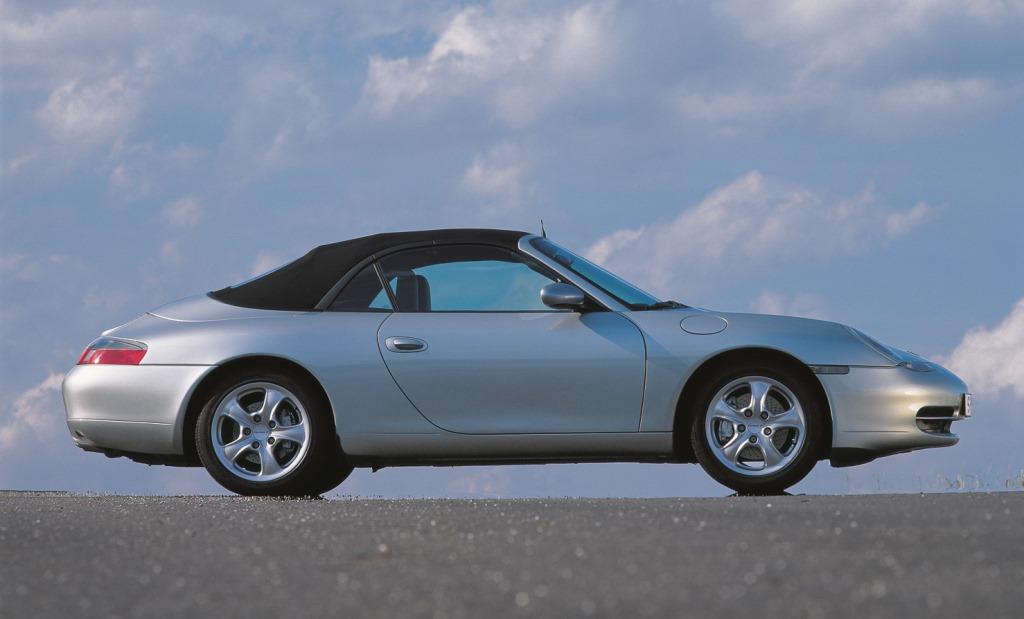
Perhaps the most striking feature of the 1999 model year Porsche 911 is the different light units, the direction indicators in the headlights and the side direction indicators now coming in white, the direction indicators in the rear lights in whitish-grey instead of orange.
As of September 1998, the 911 cabriolet is available as an option with Litronic headlights, special gas-discharge units illuminating the road ahead far more brightly and thoroughly and thus significantly improving safety at night. A further contribution to your extra driving safety is the dynamic headlight range control considering not only the load the vehicle is carrying, but also any change in body angle (sway) due to dynamic driving conditions.
The halogen bulbs (H7) for the high-beam headlights are surrounded by a particularly efficient free-space reflector. Whenever the driver activates the high beams, the Litronic low-beam headlights remain switched on and also move their own beam up by way of headlight range control in order to improve illumination of the road ahead. A further feature of the Litronic headlights, finally, is the headlight cleaning system.
The features formerly combined in the sports package may now be ordered individually. Accordingly, the driver can choose from sports seats with enhanced side support as well as 18-inch turbo-look wheels measuring 225/40 ZR 18 and 265/35 ZR 18.
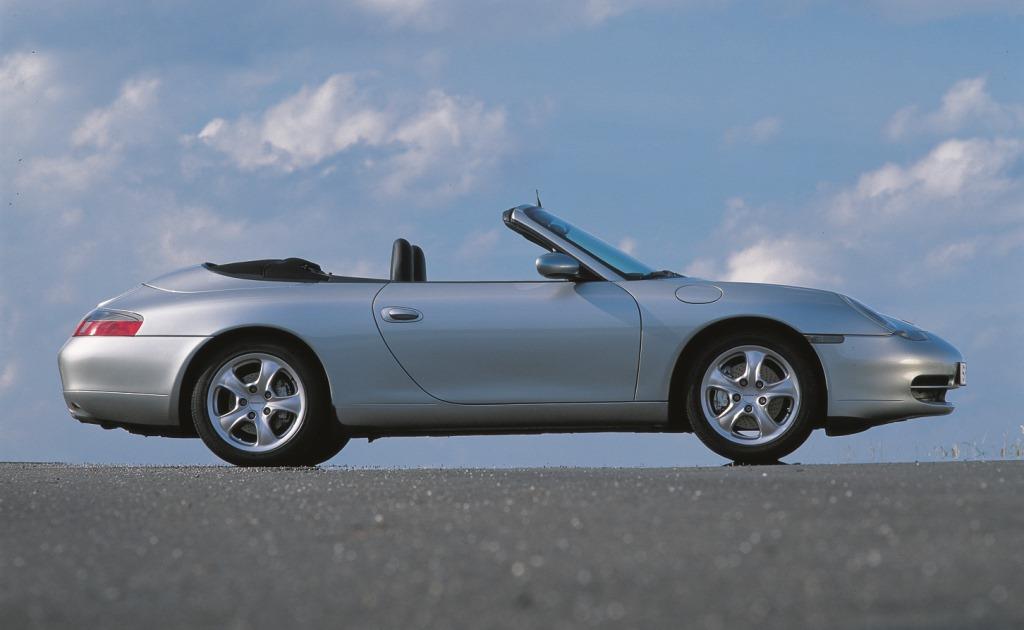
From the start the open-air version was part of Porsche’s strategy in developing the new 911. And indeed, this consistency is clearly expressed by the body design of the cabriolet with its new, perfect interpretation of the classic 911 theme. For the design and structure of the body alone sets new standards in terms of body stiffness and safety in an open car.
The folding roof on the new 911 cabriolet opens – and closes – automatically within just 20 seconds. And it can be „told“ to do so not just by a switch in the centre console, since Porsche is the first car maker in the world offering the option to open or close the roof automatically by remote control from the ignition key (not available in all countries) or from the key in the door lock.
In the event of a rollover two rollbars will efficiently protect all four occupants in the 911 cabriolet. Made of ultra-strong steel, these two bars are forced up by a spring as soon as a roll sensor determines that the car is at a dangerous angle, then resting securely in position.
Porsche has developed special extra-large side airbags for the new 911 and the Boxster, with a volume of no less than 30 litres. Thanks to this extra size and their geometry, the side airbags ensure efficient protection at both head and chest level, even when driving with the roof and the side windows down. This makes Porsche the only manufacturer to offer side airbags suitable for a convertible (standard on all models within the 911 range).
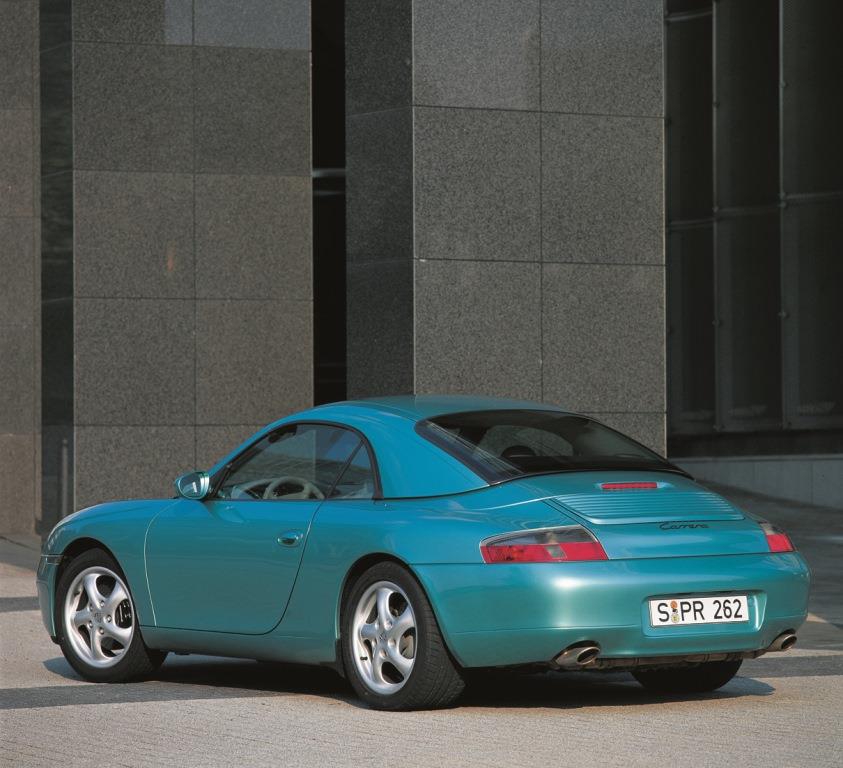
Removable quickly and with ease, the hardtop is included in the price of the car. Despite its very stable double-shell structure, the entire hardtop including the heated rear window made of glass weighs a mere 33 kg (73 lb), allowing two persons to place it on and remove it from the car without the slightest effort.
Like on the Boxster, the roof of the 911 Cabriolet folds up in a z-pattern. This ensures that even when open the outer side of the roof faces up, protecting the inner roof liner from dirt or contamination.
It is an old Porsche tradition to use a particularly high-quality material on the surface layer of the soft roof. And on the 911 a second layer of fabric covers the roof bars, serving as an inner roof liner. The rear window made of scratch-proof plastic is easy and convenient to exchange in the event of damage.
The 911 Cabriolet is one of the fastest open sports cars in the world. Displacing 3.4 litres and developing maximum output of 300 bhp (221 kW), the water-cooled flat-six gives the 911 Cabriolet a standard of performance quite exceptional even in this segment: 0 - 100 km/h in 5.4 seconds, top speed 280 km/h (174 mph) (275 km/h or 171 mph with Tiptronic S) thanks to an outstanding drag coefficient of 0.30, as on the coupé.
The longer wheelbase and somewhat wider interior versus the former model clearly benefit the occupants riding in the 911 cabriolet. Space is not only more generous at the front, but also at the rear, where the seats offer „up-and-coming“ Porsche passengers more legroom.
With its large luggage compartment at the front able to accommodate the usual commercially available suitcases and ample storage space at the rear with the backrests tilted down, the 911 cabriolet also outperforms most comparable sports cars in terms of its storage capacity.
The water-cooled boxer engine provides optimum conditions for high-output heating with a consistent, lasting effect. Particularly with the wind deflector in position, you will thus enjoy a pleasant climate inside the open cabriolet even in relatively cold weather.
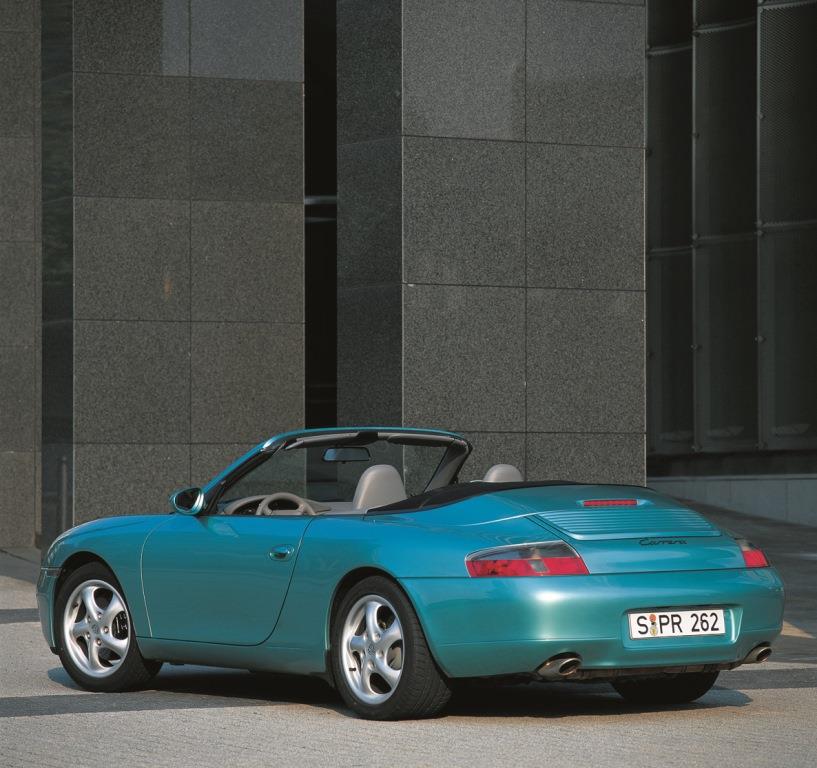
The cabriolet is the second model version within the new 911 series. And it is no exaggeration to say that it raises the calibre of the open sports car refined by Porsche for 50 years to a new standard of all-round perfection.
Featuring a wide range of safety components, the 911 Carrera Cabriolet sets a new international benchmark for active and passive safety with the open sports car.
The structure of the car’s body offers not only supreme stiffness, but also very specific deformation in the event of a collision as a particularly important safety feature.
Apart from full-size frontal airbags for the driver and front passenger, the cabriolet comes as standard with side airbags each with a volume of 30 litres. The particular forte of these airbags is the comprehensive protection they offer at head, chest and arm level, even with the roof and side windows down. Indeed, this makes Porsche the only manufacturer to offer side airbags suitable for a convertible, yet another feature of the Carrera Cabriolet being the three-point inertia-reel seat belts for all four passengers.
Two rollbars normally discreetly concealed behind the rear seats come as standard and are actuated by spring pressure as soon as a sway sensor determines the risk of the car rolling over. Carrying out elaborate tests, Porsche’s engineers have proven that the rollbars can protect all four passengers in the convertible from serious injury, should the worst ever come to the worst.
Focusing on the body design of the new convertible, Porsche’s designers were able to give their creativity free rein, since work on the coupé and cabriolet started simultaneously.
As a result, the profile of the open-air 911 is matched even more consistently than ever before to the unmistakable silhouette of this unique car. This gives the purchaser an even more elegant convertible with a fully retracting roof vanishing when opened beneath a lid at the rear. Opening and closing the roof is electrohydraulic and takes a mere 20 seconds, together with the side windows also opened and closed in the process. And the operation can be initiated in three different ways: by a button on the centre console, by remote control from the key (not in all countries) or by turning the key in the lock beyond the usual locking position.
The development of the 911 Carrera Cabriolet is based on close cooperation between Porsche AG and Car Top Systems (CTS), a Porsche subsidiary specialising in roof technology. Indeed, the soft roof of both the 911 and the Boxster is made by CTS in the small German town of Korntal-Münchingen and delivered to Porsche ready for installation. And CTS also designed and developed the hardtop fitted as standard.
The soft roof of the 911 Carrera Cabriolet naturally comes in top quality featuring a very elegant but virtually indestructible outside material called „Sonnenland“, a word which appropriately translates as „Sun Country“. Inside, the roof mechanism is discreetly covered by an attractive roof liner, and wind noise has been reduced to a minimum by Porsche’s acoustic experts working on virtually every detail.
Yet a further standard feature of the Porsche 911 Cariolet is the hardtop made of aluminium complete with a glass rear window heated electrically. Built as a double-shell structure, the roof with its aluminium parcel shelf ensuring extra stiffness and stability is particularly strong, reduces wind noise to a minimum and weighs a mere 33 kg or 73 lb, meaning that two persons are able to fit and remove the roof with ease. And with just a few minor operations, it fits firmly and reliably on to the body of the car, the electrically heated rear window being linked up automatically in the process.
A wind deflector for open-air motoring without any annoying turbulence is available as an option. When not required the deflector fits perfectly into a bag within the spare wheel cover.
In its basic technical features the cabriolet is virtually identical to its coupé counterpart, sharing the same main body components, the chassis with its light alloy suspension, the water-cooled flat-six power unit and power transmission provided either by a six-speed manual gearbox or Tiptronic S five-speed automatic transmission. Accordingly, the new cabriolet offers all the benefits and fortes of the current 911 model series:
The wide range of options and special equipment available for the cabriolet is the same as on the coupé. A feature deserving particular mention in this context is PCM Porsche Communication Management fitted complete with a terminal in the middle of the instrument panel and combining a whole range of functions, as with the coupé.
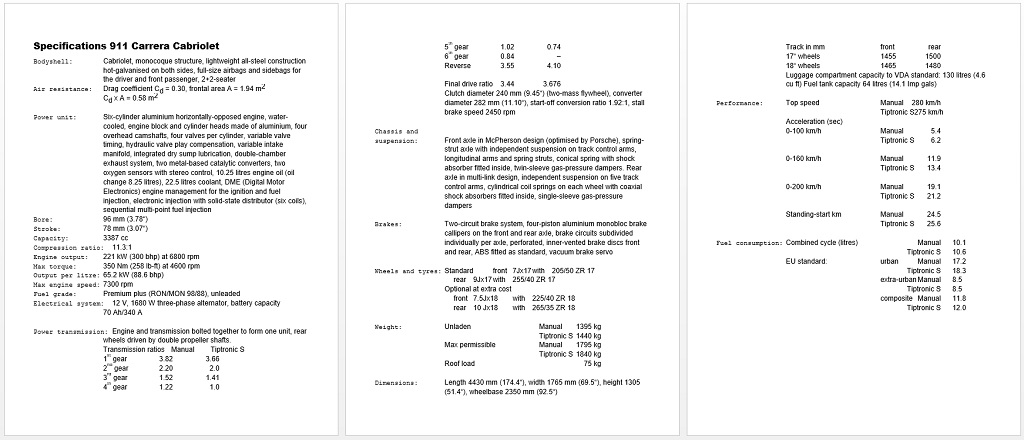
.jpg)
1998 - The new 911 Carrera Cabriolet
.jpg)
2000 - Porsche 911 (996) Carrera Cabriolet
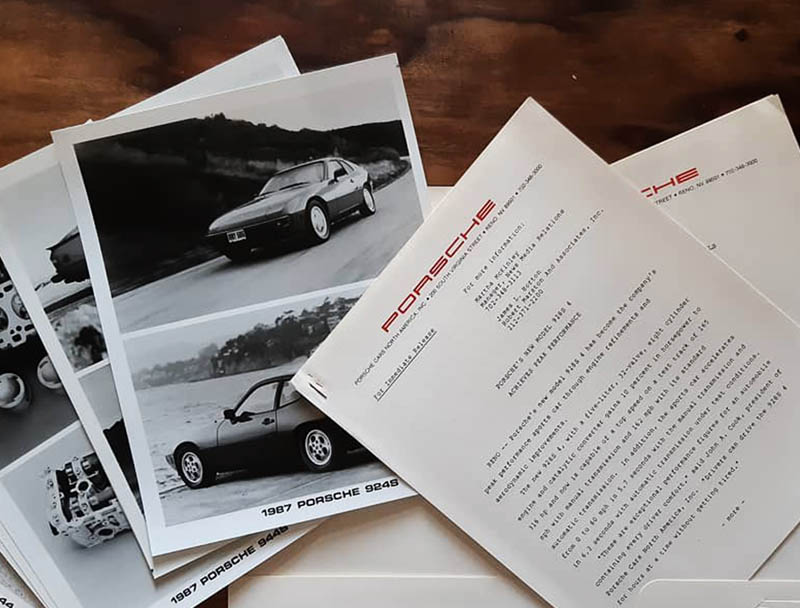
Porsche Press kit
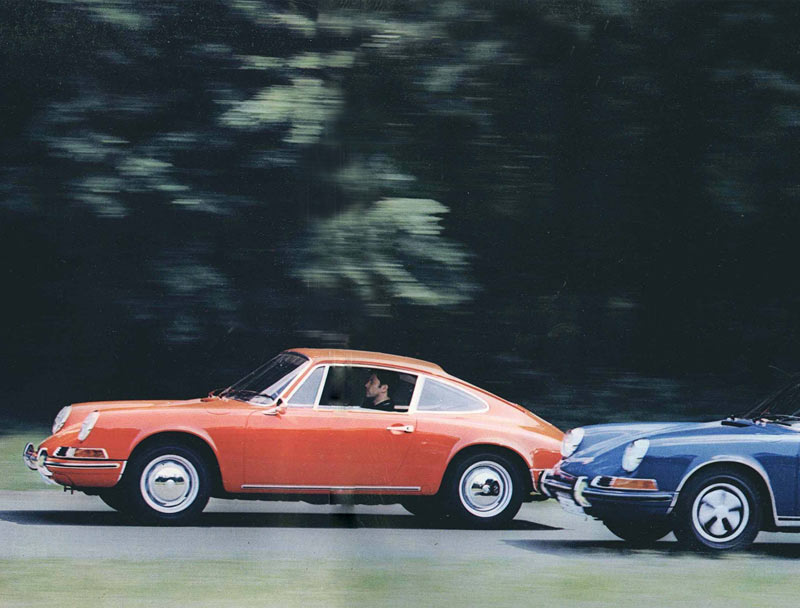
Porsche Literature
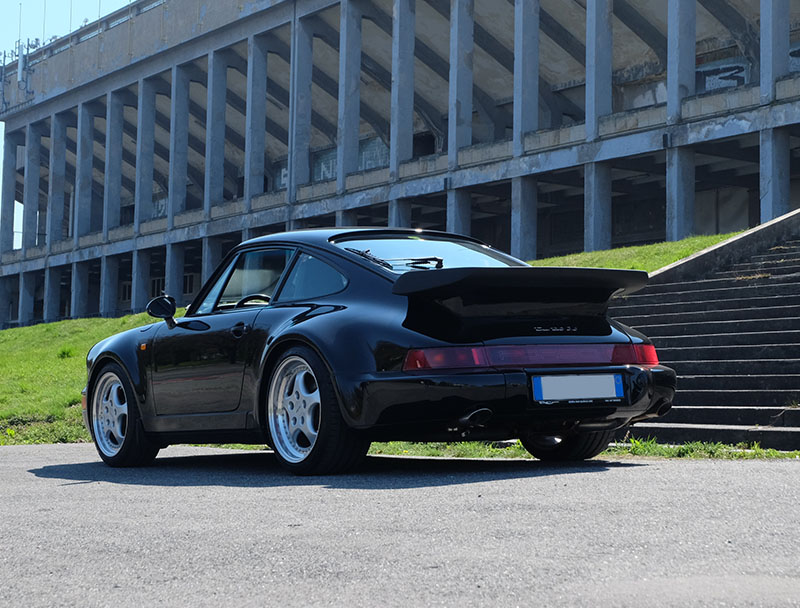
Our Porsche Cars